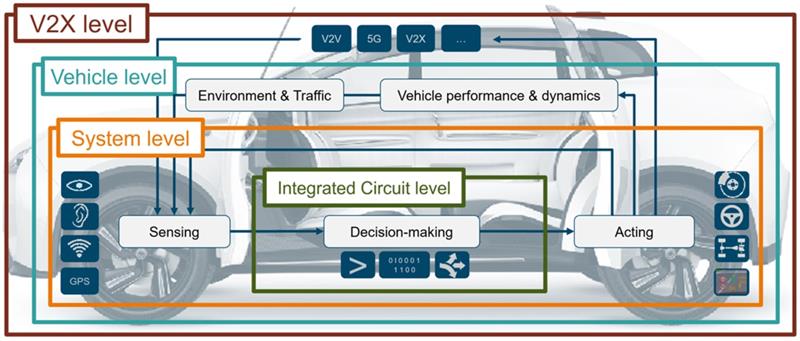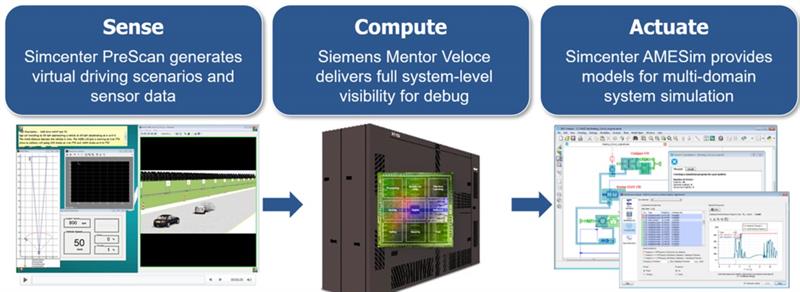In addition to the traditional digital environment seen in systems-on-chip (SoCs), system-of-systems designs combine physical world elements like sensor inputs and mechanical interactions.
A perfect example is the autonomous vehicle (AV) as Figure 1 below shows:
 The AV design levels:
The AV design levels:
- The integrated circuit (IC) level that can include one or more system-on-chip (SoC) designs.
- The system level consists of multiple interconnected electronic control units (ECUs) that encapsulate a few or several ICs and supervise vehicle operations under different driving scenarios.
- The vehicle level that encompasses the entire car.
- The top level is the connectivity level that encompasses all three levels.
Is it possible to test an AV design with real time scenarios?
Estimates say it would take billions of miles of road testing. Instead, what is needed is a high-performance verification/validation platform that operates on accurate digital models in a virtual environment that mimics real-time scenarios: PAVE360.
PAVE360 (Figure 2 below) is built on the concept of a digital twin, and it consists of a complete AV verification and validation environment modelled at the system level that represents a twin image of the physical vehicle and its driving surroundings.
The digital twin is made of digital models representing the AV environment, including sensors, processors, actuators, ECUs, connectivity networks, and driving scenarios.
This digital twin can validate the system-of-systems without driving billions of miles.

Simcenter PreScan generates the driving scenarios and sensor data which drives the compute system on the Veloce emulation platform.
Simcenter AMESim provides system simulation to form a closed-loop environment.
Pre-silicon validation of an autonomous vehicle design is a real possibility today using PAVE360.













